Using scarcity to drive engagement in mobile apps
In behavioural economics, scarcity is a well known approach that drives engagement and desire in a product but can also lead to some “irrational” decisions by users. It is widely used in the business world in order to drive sales and in gaming as one of the fundamental methods in monetization. Scarcity can be applied in different forms in things like time, access, resources and others. With the introduction of scarcity, products may become more attractive and their perceived value increases, putting this way some sort of pressure, driving actions by users under the fear of missing an opportunity. When properly placed, scarcity can also create obsession and desire feelings, leading this way to engagement in mobile apps.
Limited number available – Thrive in uniqueness and exclusivity!
Creating the illusion that there is a limited quantity of a certain product available and only a select few will be lucky enough to get their hands on them, this increases people’s need and want to acquire them. This principle does not only apply to material things, but in the gaming world it can be used for game elements and certain app privileges or powers to use in the game. Making something appear to be rare increases people’s perceived value of it and their desire to have it. Just look at the efforts that collectors make to acquire a special edition of a product, how far fans of a band go to get their hands on limited tickets to a concert, and much much more.
Only a few exist out there!
Pokemon Go uses this approach extensively with the introduction of several rare Pokemon for players to catch. Some Pokemons are really difficult to find and have certain super powers, making users eager to hunt them down and catch. Some of these Pokemons appear only in specific areas and they are very difficult to spot and catch. There are even some Pokemons that are so rare to find that there is no record of anyone seeing them in the game yet, giving rise to rumours and creating great hype around them. Needless to say, these are some of the most sought after Pokemons, and people strive to level up in an effort to find them and catch them.
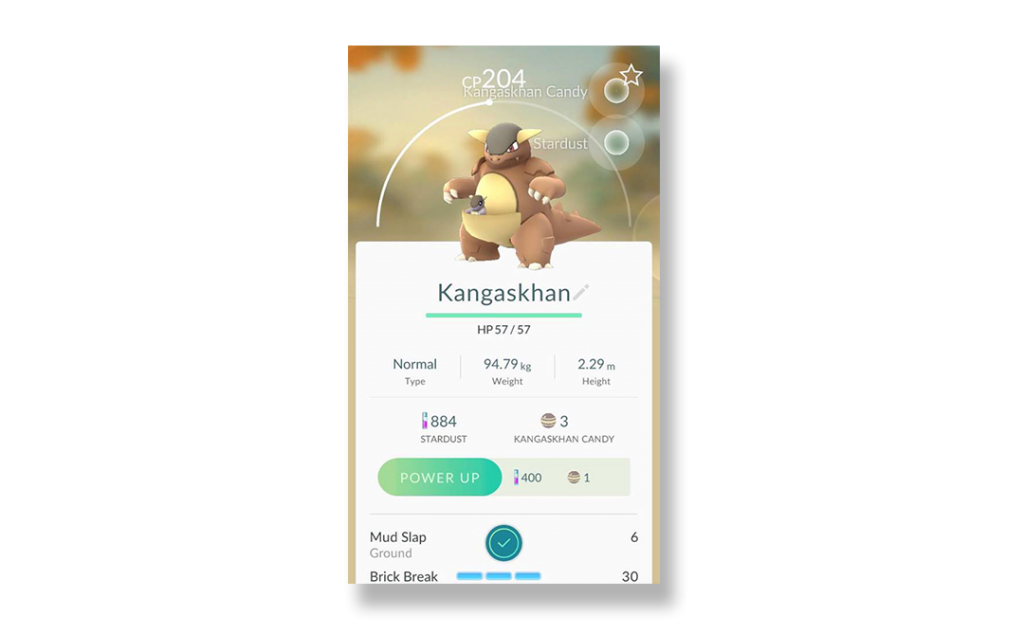
The limited edition
Vineyar Vines, a clothing and accessory retailer app, actually builds a state of scarcity in order to spark in-app sales. For example, in a campaign in their social media, Vineyard Vines advertised the giveaway of a limited-edition golden whale sticker signed by the brand’s co-founders with any in-app purchase. With the use of timely promotions in the social media, in-app sales increased following the excitement buildup amongst the app users. Following the success of that initial campaign, the brand run several similar ones, providing different limited edition whale stickers.
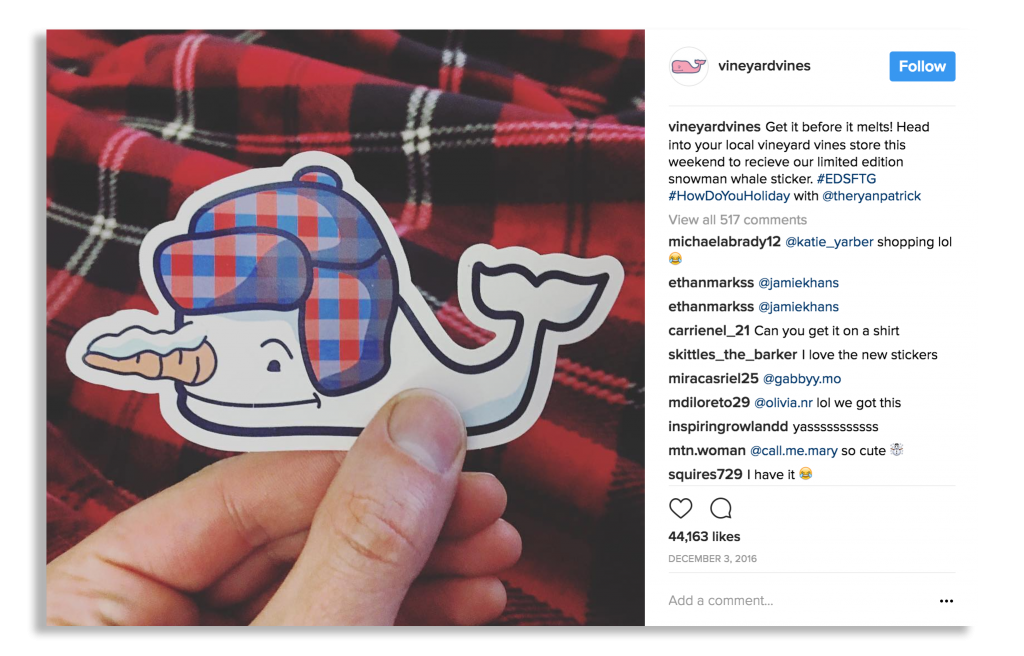
You can’t have it!
Pokemon Go in particular, makes use of the scarcity effect to manipulate user desire and promote anticipation in the players of the game both intentionally but also by accident. Its carefully planned release to specific countries took advantage of people’s need to be the first to try out something. And as the hype around the game grew, more and more people, especially in countries where the game was not yet published, tried to find ways to access it, even using black hat techniques to achieve their goal. Not being able to download the app while others could, was enough to bring about a hype unlike any we have recently seen in the gaming world. Even some server issues that the game developer had following the official launch due to unexpectedly high user volumes, played to their advantage. Those issues, helped further increase the desire for the product instead of drive users away. If all these people are trying to play this game, then it MUST be worth playing!
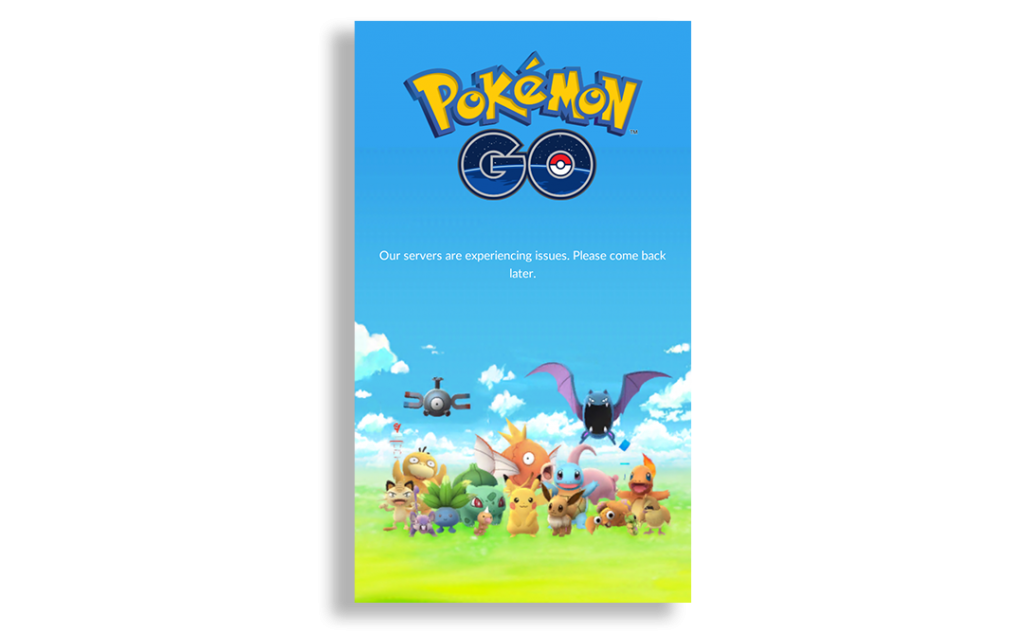
This power is only for the few that will earn it
StackOverflow offers a privilege scheme where users can access more and more privileges depending on the user’s progress on the platform. Since only a few people can reach/gain specific privileges like moderation power, leveling up is a challenge, all in the expectation of earning more privileges on the platform, driving daily engagement and participation.

Time is running out – Now is your chance!
Combining the effect scarcity has with a time factor can be a very smart approach. It can drive people to make decisions they normally would not make by being pressed with the threat of time running out and loosing a good deal. Time-sensitive offers are very common during Sale periods in the retail world. The opposite method can be used to. “Moments of silence” are widely used to cause a player’s impatience to reach its peak. When the player’s unwillingness to wait wins over his control, he is ripe to any “opportunity” the game provides to skip that time barrier. A perfect point in the game to add a monetization feature.
First-come, first-served until it runs out!
Uber, a transportation networking company, used the limited offer approach aggressively, especially when entering new markets and prior to the launch of UberEats. In a particular example, Sushi meal packages were offered and delivered for free, on specific dates and within specific timeframes, in a first-called, first-served mode, until stock lasted. That offer resulted in a massive number of new installs, spreading via word of mouth in the area. That wasn’t all, though. All those new users (and the old ones, too) were using the app extensively during the limited time the offer was available, trying to get their free meals.
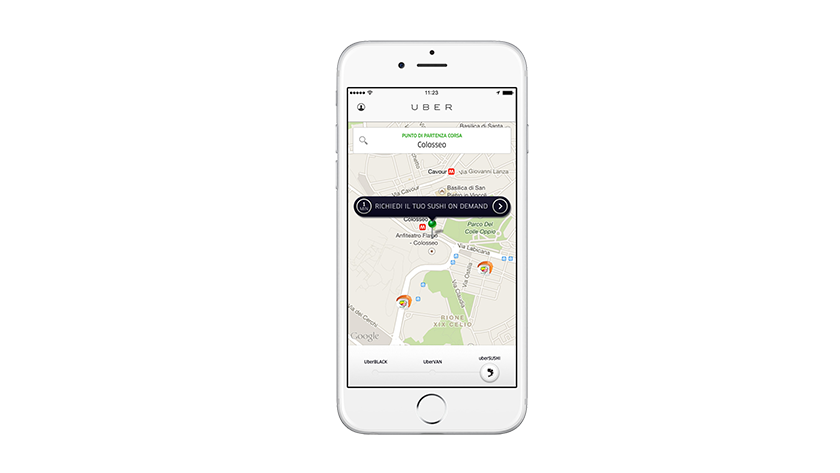
Limited time offers
We experienced something similar at Pollfish. At Pollfish, we provide a DIY survey tool on our website that anyone can visit to create a survey, select which people to target, pay and then start receiving results in real time. Prices start at $1 per completed survey. However, when we initially launched our product, even though our prices were very competitive, the conversions were not quite what we expected. Users were signing up but never moving on to making a payment, within a short timeframe. We then decided to introduce a time-sensitive discount, available only to newcomers on the platform. The result was really interesting; more users were signing up to take advantage of the offer and even more were completing payment within the specified time period to take advantage of it before it expired!
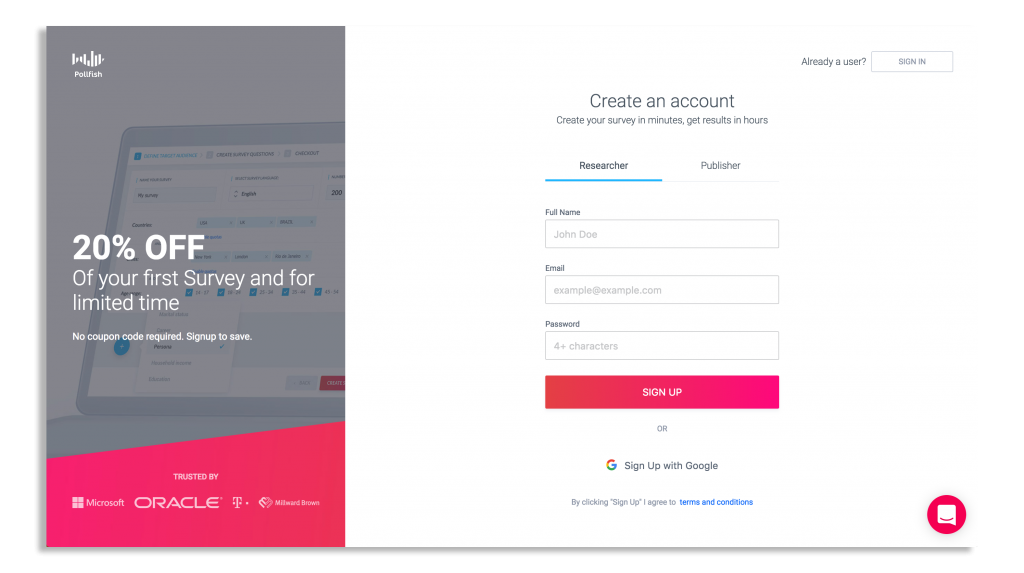
At Pollfish we also partner with thousands of mobile apps and websites where we render our surveys. Since Pollfish offers one of the most high paying solutions out there, coupled with the best user experience, it became popular very quickly, especially in rewarded solutions where users get some sort of a virtual reward in exchange for completing an action. At that point, we decided to introduce a scarcity mechanism restricting access to surveys to a user for 6 hours after successfully completing a survey. That resulted in users requesting app owners to offer more Pollfish surveys, making them a must-have part of the game or app.
Moments of silence & boosters
Lale mou, an anonymous Greek dating chat application, where users can chat with others uses a scarcity mechanism as well. Users have to wait in line before they are able to chat with other users. If someone wishes to jump the waiting line, they can do by spending some virtual coins. Since users of the opposite side may not always be available in large numbers, the line to wait in order to be able to chat to someone may grow quite long. Being able to get the front of the line is worth a lot. That “moment of silence” as described above, gives real value to the app.
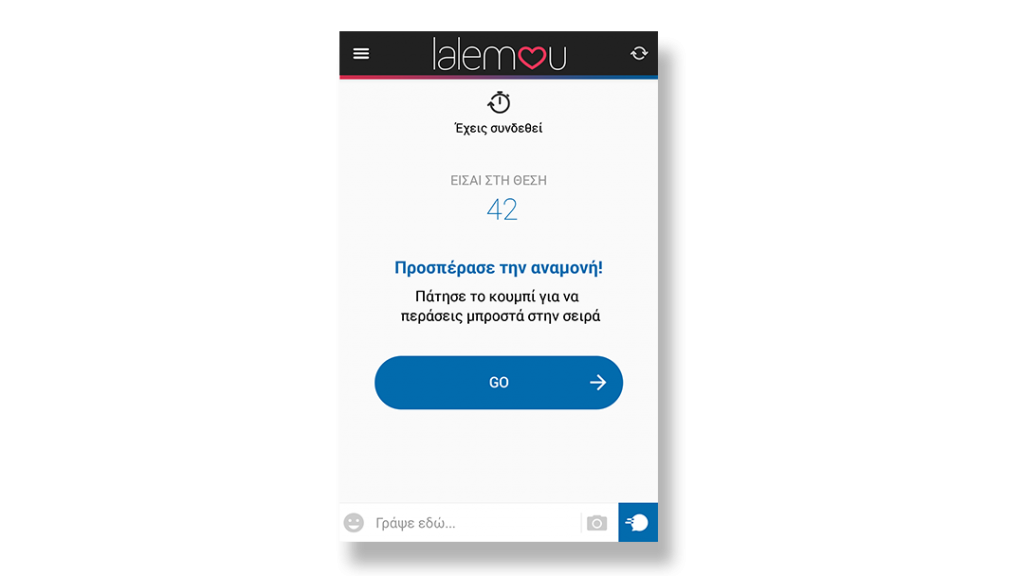
Tinder and other dating apps also use scarcity extensively to monetize their apps, but also drive daily engagement and usage. Tinder allows you to make a match if both sides swipe right. However, a user has a limited number of right swipes, making each right swipe that more valuable. To make things even more difficult, each user has to either wait 12 hours for his swipes to be restored, or make an in-app purchase to get more likes. Within these 12 hours user becomes obsessed with the app, thinking it all the time checking back again and again when the time for refill is close. This technique not only drives obsession and brings users back on a daily basis, to use the new swipes available, but like in the Lale mou app, Tinder offers the option for users to get more visibility with a boost (get in front of the line) and/or also skip these “moments of silence” and refill their account without having to wait if they pay something. Another great monetization opportunity.
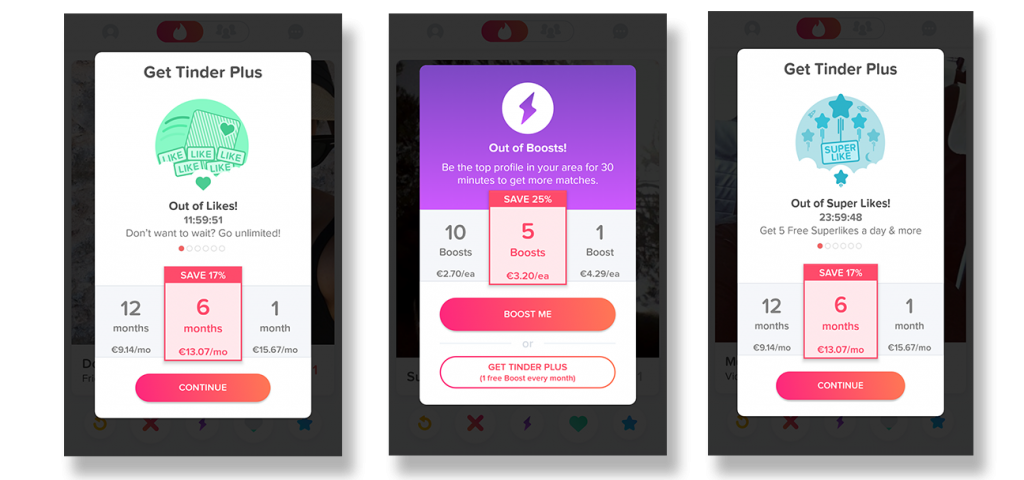
Today’s deal
Amazon app’s Today’s deal section follows the same concept. Users will find there exclusive daily deals to take advantage off. Amazon even added a countdown to ensure that all users are reminded of the time left on the offer. That not only triggers users in the Deal section to make purchases but also attracts new visitors daily, users that are looking to see what the Today’s deal is.
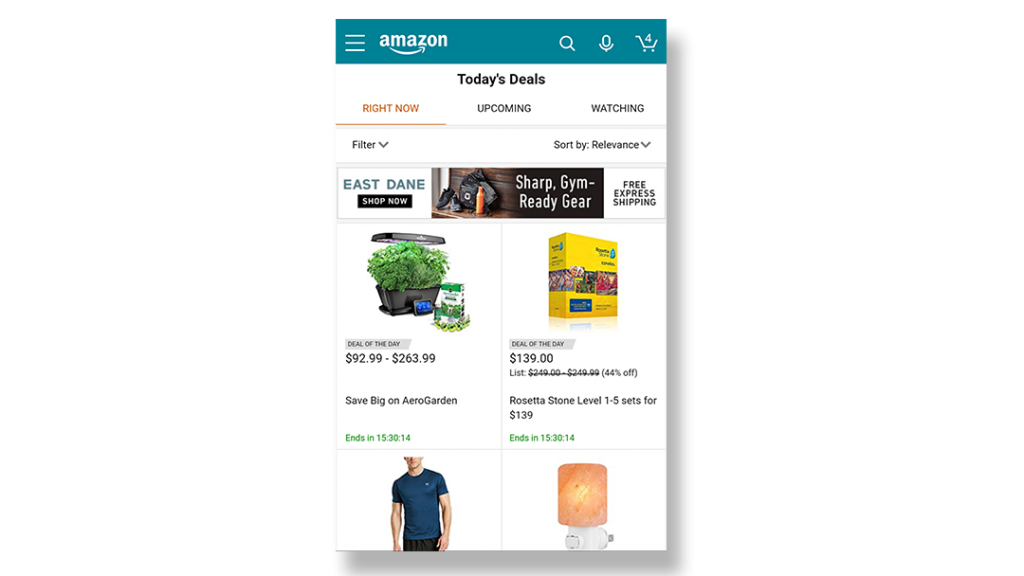
Prior Amazon App Store launched Amazon Underground, it used a similar approach with Today’s Deal with their Free App Of The Day section. In that section users were able to find a paid app title for free, only for that specific day. This promotion helped Amazon attract people’s attention and bring them to the Amazon app store on a daily basis capturing this way a significant piece of the app store’s market share.
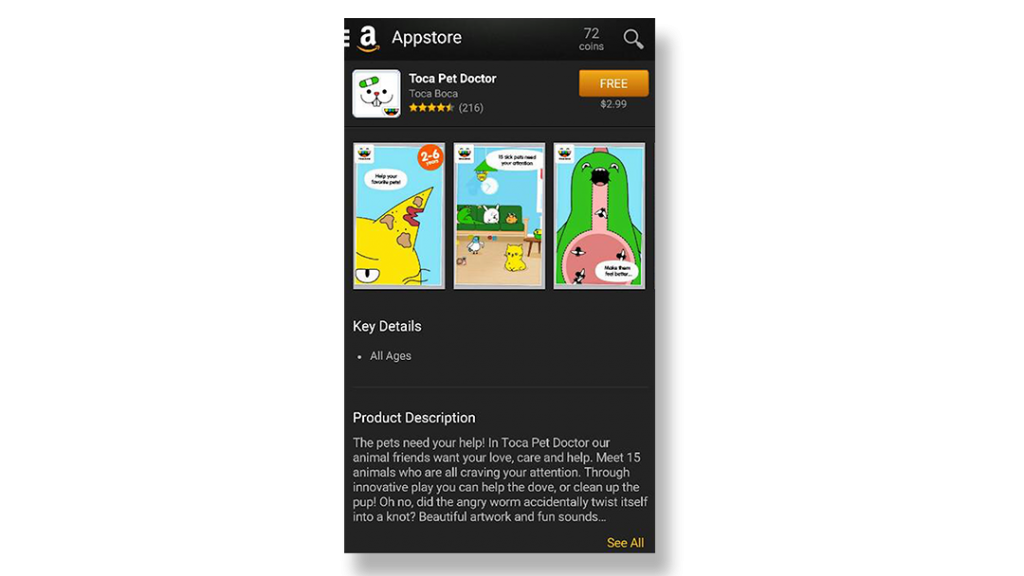
Limited time access
Snapchat’s self-destructing messaging app design was based on and took advantage of the notion of providing restricted access to content. Snapchat allows users to send image or video message that “self-destruct” in a few seconds. That was one of the main reasons for its success and popularity among millennials and it was later on adopted by other big platforms too.
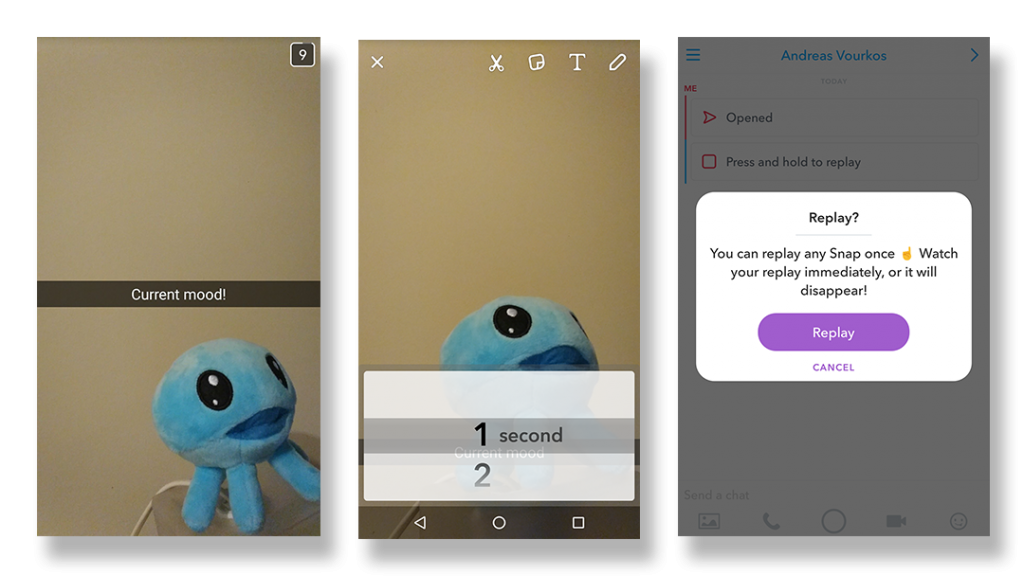
Driving decisions
The Wish shopping app is actually an excellent example of the use of the scarcity effect. The app includes several offers and discounts as well as limited time offers. When a user is navigating the app, he is presented with several instantly available purchases that he needs to take advantage of or they will expire (timers are all over the app). Enhancing the feeling of missing out on a rare opportunity, Wish app keeps users coming back and motivates them to make purchases. It all comes down to very clever use of several techniques such as stock almost running out, extra discount for a limited time period and many more.
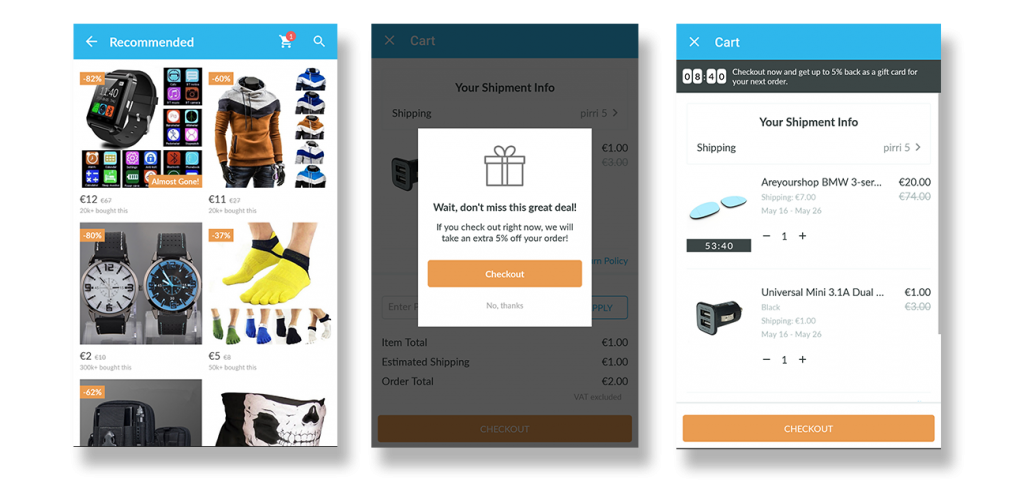
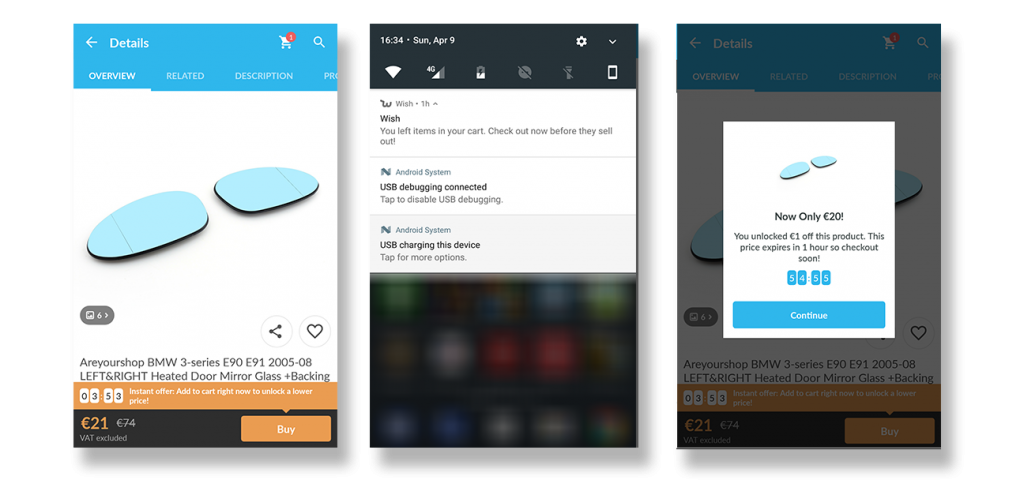
Only a few left at the time you checked
The Booking.com app builds a state of scarcity by displaying information on rooms available. Even though there is updated information on the time left until all rooms are booked, showing the actual number of rooms left is much better at motivating users to make that booking. People are not only making reservations because they fear that rooms are running out, but also because they think a place that is so popular must be good. Why else would rooms in that hotel be getting booked so fast? And now that there are only a few left, they need to make a booking as soon as possible.
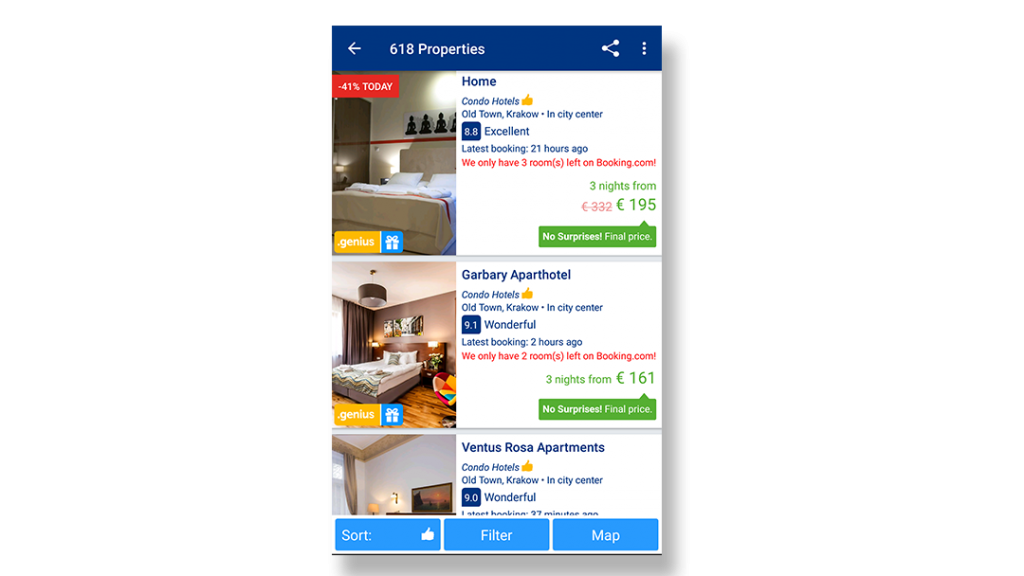
Use it with restrictions – Limited access to resources
Restricting one’s app usage may sound like a crazy thing to do but it can eventually be the basis of a very successful platform.
Feature limitations
Twitter, one of the biggest social networking platforms out there, was built upon the concept of scarcity. Twitter restricts tweets to 140 characters. Even in the early days following its launch, limiting message composition sounded ridiculous. However, it has actually turned out to be one of the main reasons for the platform’s success.
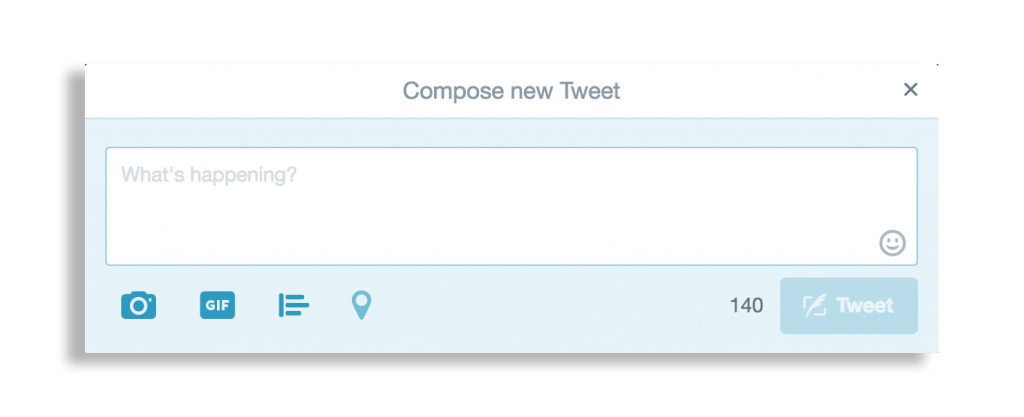
Access Limitations
Slack, a real-time messaging and collaboration tool for teams, uses scarcity to reveal monetization opportunities, a really common practise in tools, platforms and games. Users of the free plan only have access to the recent history of their conversations on the tool (something that sounds ridiculous for a messaging tool). If someones wishes to access data and information exchanged in older conversations, they need to upgrade to a paid scheme.

Emotions drive the decisions people make every day, and an app’s success may depend upon its developer’s ability to understand and interpret them. Scarcity in mobile apps is based on the classical economic theory that people will always want more than what is available to them. Once again, a basic human emotion is used not only to create monetization opportunities but drive users to certain decisions, with a specific end goal. Scarcity can take many different forms like limited offers available, rare collective pieces, moments of silence and many more. Some of the most popular apps out there have incorporated the effects that scarcity can have on their users as part of their core features and they have based their success on that.
Do you want to distribute your survey? Pollfish offers you access to millions of targeted consumers to get survey responses from $1 per complete. Launch your survey today.
Global GSK Shingles Survey Insights
Original Insights,The Pollfish Blog
February 24, 2024
Shingles misconceptions: new global survey commissioned and funded by GSK highlights widespread…
B2B Sales Emails: Are they Effective or a Nuisance?
Original Insights,The Pollfish Blog
September 6, 2022
Are B2B sales emails a thorn in your side? Do they drive you crazy? Virtually all white-collar…
